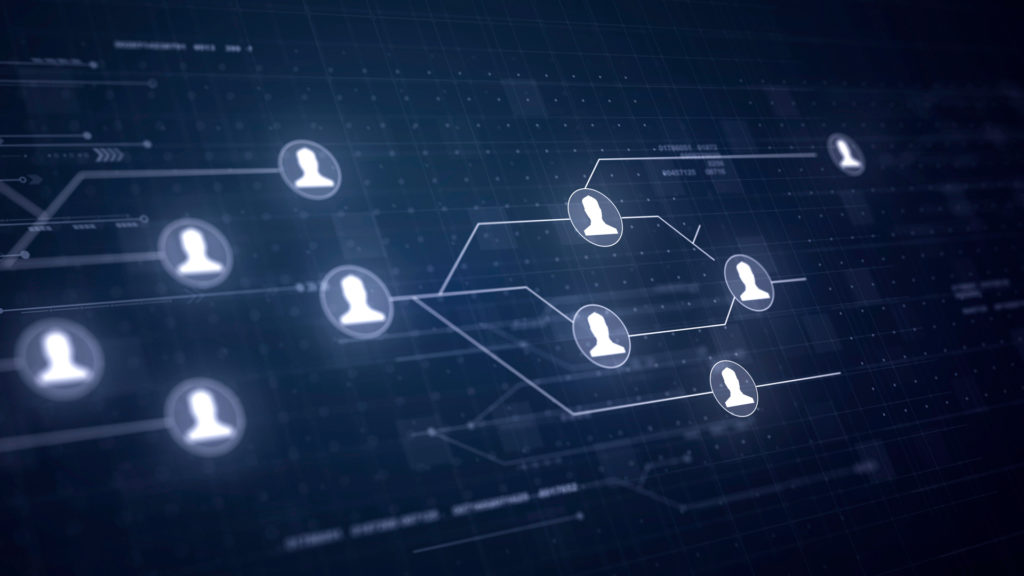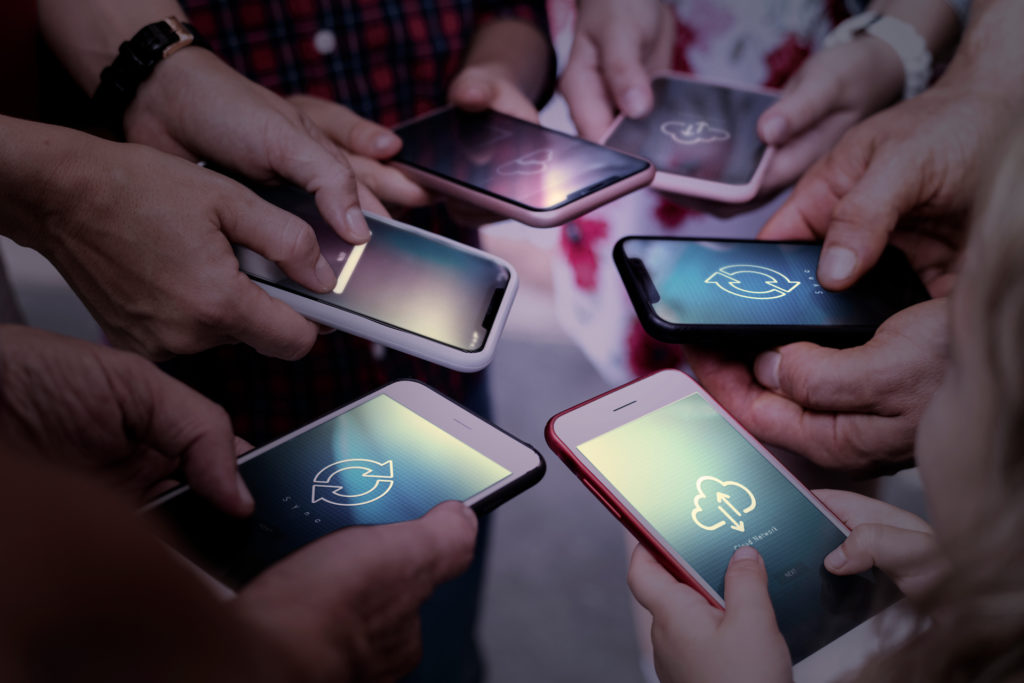Internet of Things (IoT): A Beginner’s Guide

In this blog post, we will discuss the basics of IoT, and how it can benefit your business. We will also provide an overview of the different types of IoT solutions and technologies that are available today. If you are looking to implement IoT in your business–or if you simply want to learn more about it–this blog post is for you!
What IoT means
The term “Internet of Things”, or IoT for short, refers to the growing network of physical objects that are connected to the Internet. These objects can be anything from cars and appliances, to buildings and even the people behind the screens.
IoT devices are equipped with sensors and other components that collect data about their surroundings and communicate with other devices. This information is then transmitted over the Internet, where it can be stored, analyzed, and used to trigger automated actions.
These solutions are built on a foundation of:
- Connectivity: enabling devices to connect to the Internet and exchange data.
- Analytics: transforms data into insights that can be used to make better decisions.
- Automation: enables actions to be taken based on those insights.
For example, an IoT-enabled thermostat could use data about your daily schedule and the weather outside to adjust your home’s temperature automatically. A smartwatch could track your heart rate and activity level throughout the day, and then send you alerts if it detects anything out of the ordinary.
The potential of the Internet of Things is huge. McKinsey Digital, a Chicago-based consulting firm, estimates that the economic value of IoT will reach about $12.6 trillion by 2025, so it’s imperative to understand what IoT is and how you can capitalize on it.
It’s also important to know that implementing IoT solutions can be complex and costly. Taking advantage of this technology often requires a deep understanding of how connectivity works, as well as the expertise to integrate it into existing systems. As such, it’s important to partner with an experienced provider who can help you navigate these challenges and deliver effective solutions.
When IoT started

The term “Internet of Things” was first coined by Kevin Ashton in 1999, while he was working at the international consumer goods agency Procter & Gamble. He realized that the company could benefit from connecting its physical objects like shampoo bottles and detergent boxes to the Internet. This would allow P&G to track these items throughout the supply chain from manufacturing to sales using RFID tags. The term quickly gained popularity, and it is currently used for any object that can be connected to the Internet and controlled remotely.
How IoT works
The Internet of Things is usually made up of a system of interconnected devices and sensors like motion detectors, temperature sensors, and GPS receivers that collect and share data about their surroundings. IoT solutions can range from simple home automation systems to complex industrial applications. It is used in many different industries, such as healthcare and transportation, to improve efficiency and safety.
The diagram below illustrates how the IoT process usually works. As you can see, data collected by IoT devices is sent to a central server–which we refer to as the cloud–where it can be accessed by authorized users.

IoT devices are connected to the Internet via wireless communication protocols like Bluetooth and Wi-Fi. Other components of an IoT system include cloud computing platforms such as Amazon Web Services and Microsoft Azure, and data analytics tools like Splunk and Tableau. Each protocol has its advantages and disadvantages, so it’s important to choose the right one for your needs.
Why IoT is important

The Internet of Things is important because it represents the future of technology. By 2025, there will be over 30.9 billion devices connected to the Internet. Experts predict this number will grow exponentially in the upcoming years. As more devices become interconnected, businesses could gain access to a wealth of data and functionality that can be used to improve their operations.
Additionally, IoT has the potential to change the way we interact with the world around us. With ‘smarter’ objects that are connected to each other, we can create a more efficient and productive society. The Internet of Things enhances our understanding of how different systems work together, leading to more informed decision-making and logical problem-solving.
Where the Internet of Things is used
IoT applies to many complex business challenges. These are just a few examples of how the Internet of Things is used in different industries:
- Transportation: Data can be used to track vehicles, optimize routes, and avoid traffic congestion.
- Supply Chain Management: Improves inventory tracking and ensures timely product deliveries. For example, RFID tags can track the location of each product in a store, so a company can locate and restock items that have sold out.
- Housing and Architecture: IoT technology is used in housing and architecture to create “smart homes”. These homes can be controlled by smartphone or tablet apps, which include features like lighting control, climate control, security systems, and home entertainment systems.
- Business Management: Is also being used in business management to optimize quality. For example, many businesses are using sensors to track the temperature and humidity levels of their warehouses. This information helps them make sure their products are stored properly and prevents spoilage.
- Consumer Devices: The IoT is used in many consumer devices, from wearable fitness trackers to smart lighting. These devices are becoming increasingly popular since they let consumers track their health and well-being, stay informed on the go, and prepare for emergencies.
- Healthcare: It can be used to monitor patients’ vital signs, track the progress of their treatment, and remind them to take their medications.
- Retail: Data can be used to study customer behavior. For example; a phone might monitor metrics about a consumer’s gait. Retailers might use this information to recommend a specific shoe to the consumer in targeted ads or send a coupon to promote a sale when they walk into a shoe store.
- Manufacturing: IoT devices can be used to monitor production lines, identify issues early, and prevent quality control problems.
- Agriculture: IoT devices can monitor crops, soil conditions, and weather patterns. This information can then be used to optimize irrigation and fertilizer use.
The Internet of Things is revolutionizing how we live, work, and play. As the IoT continues to grow, we can expect to see even more innovative uses for this technology.
IoT benefits

IoT technologies allow for smarter products and services that make our lives easier and more efficient. It can transform how businesses operate using real-time data to inform decisions, improve efficiency, and create new products and services.
The potential benefits of IoT include:
- Cost savings: Automating tasks can help businesses save money on labor costs. IoT data helps companies identify areas of waste and inefficiency, so they can eliminate them. For example, power usage monitoring can tell you if your employees are wasting energy by leaving lights on unnecessarily.
- Increase efficiency and productivity: IoT devices can collect data about quality control with automated machinery. This automation can free up employees to focus on other tasks and improve overall efficiency.
- Enhance safety and security: Security IoT devices can use sensors to detect intrusions or unusual activity or send live camera feeds to your phone so you can check on your property remotely.
IoT challenges
Your business should also be aware of challenges that could affect operations as with IoT solutions and technologies:
- Data overload. Collecting and transmitting so much data means some businesses might have difficulty making sense of it all.
- Security. As more devices connect to the Internet, the risk of cyberattacks increases. Businesses should take steps to protect their networks and data from malicious behavior.
- Cost of implementing IoT solutions. Many of the technologies for effective IoT deployment are expensive. There are providers who offer low-cost or even free services and tools, however.
- Compatibility. Not all devices are compatible with one another, so businesses must ensure that their devices can work together seamlessly. Additionally, businesses need to have staff who are knowledgeable about how to use and operate IoT devices. Training and support should be available to employees who need them.
Overall, the IoT offers many potential benefits for businesses of all sizes. Understanding the challenges that come with its adoption, business owners can use this technology to improve their companies without unnecessary risks.
Other common FAQs about the Internet of Things
What is an example of an Internet of Things device?
IoT devices include everything from phones and computers to refrigerators, cars, and even heart monitors. These are some of the most common IoT devices:
- Wearables are used to track fitness data and monitor vital signs. In the future, these devices will be able to detect early signs of disease and notify the wearer and their doctors immediately.
- Homes and home appliances are becoming more energy-efficient and easier to use. For example, some refrigerators and ovens can be controlled remotely via a smartphone app.
- Cars have become much more connected, with many featuring advanced driver assistance systems (ADAS) that warn the driver of potential hazards, monitor surroundings, and even take control of the car in emergencies.
- Retail Point of Sale terminals are more intelligent, connecting directly to the Internet for orders, processing payments, and updating stock levels. Businesses can keep track of their sales in real time and make adjustments to meet demands.
Can IoT work without the Internet?
IoT does not work without the Internet. Devices that support IoT must be connected to send and receive data and this connection is made using Internet access. In some cases, however, such as an Internet outage, a device can still collect data from sensors and store it offline. Once back online, it will sync with the other devices again, and upload the data from the outage period.
In some cases, data is processed on a local network or within a specific area without an external Internet connection. This might be useful in secure environments where data protection is the primary concern.
In most cases, you can use public cloud services to connect to the Internet and access the tools and applications for IoT. Many businesses are already doing this, and they are benefiting from the cost-effective scalability and flexibility provided by public cloud services.
Are IoT devices secure?
IoT devices are secure when they are designed and built with security features from the beginning. Encryption and firewalls are two essential security technologies for protecting data from IoT devices.
Encryption is the process of transforming readable data into an unreadable format to protect it from unauthorized access, usually for securing information that is being transmitted or stored. Encryption provides a high level of security without changing how devices operate, and it keeps data confidential even if it is intercepted by third-party attackers.
Firewalls protect networks from unauthorized access by inspecting traffic and blocking malicious packets before they reach a destination. A firewall can be configured to allow or deny specific types of traffic, which gives administrators more control over how data flows through a network.
Both encryption and firewalls are important tools for keeping data used by IoT devices safe. However, the best approach will vary depending on the specific needs of an organization, so it’s important to evaluate the benefits and drawbacks of each solution.
Final Thoughts
The IoT market is growing rapidly and offers many potential benefits for consumers and businesses alike. With ‘smarter’ objects that are connected to each other, we can create a more efficient and productive society. The Internet of Things enhances our understanding of how different systems work together, leading to more informed decision-making and logical problem-solving that improves our overall quality of life.
Implementing IoT solutions can be complex, but with the right partner by your side, it doesn’t have to be. If you’re looking to implement IoT solutions in your business or home, we encourage you to reach out to us by scheduling a free consultation. Our team of experts has a deep understanding of how connectivity works and can help make your vision a reality. Contact us today to learn more about our services and how we can help you get started.
We Want Your Feedback
What are your thoughts on IoT? Do you think that the Internet of Things will have a positive or negative impact on society or businesses? Let us know in the comments below!


 The Ultimate Guide to Business Automation: What is It, Why is it Important, How Does it Work?
The Ultimate Guide to Business Automation: What is It, Why is it Important, How Does it Work?  Internet of Things (IoT): A Beginner’s Guide
Internet of Things (IoT): A Beginner’s Guide  ERP Systems: Everything You Need to Know
ERP Systems: Everything You Need to Know  Unlocking Knowledge: Navigating the Future of Education with AI in Learning Applications
Unlocking Knowledge: Navigating the Future of Education with AI in Learning Applications  Crafting Exceptional Experiences: Harnessing Design Thinking for UI/UX Problem Solving
Crafting Exceptional Experiences: Harnessing Design Thinking for UI/UX Problem Solving
Steve Smith
June 28, 2023 at 10:16 pm |
I appreciate that you explained that inspecting internet traffic could help with proper firewall usage. The other day, my friend informed me he was hoping to have a consultation with a global technology company that could help entrepreneurs with advanced solutions for their marketing productions. He asked if I had any idea what would be the best option to consider. I’m glad about this instructive technology guide article. I’ll tell him he can consult a trusted technology company as they can provide technical information.